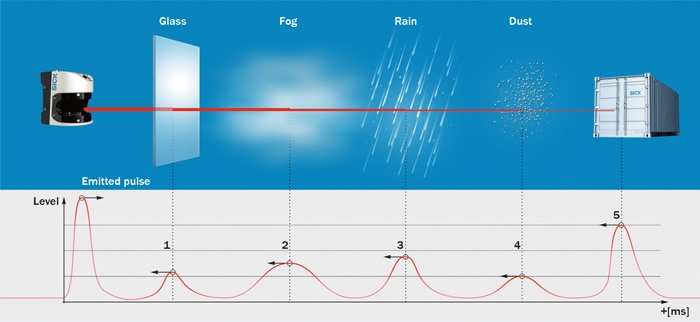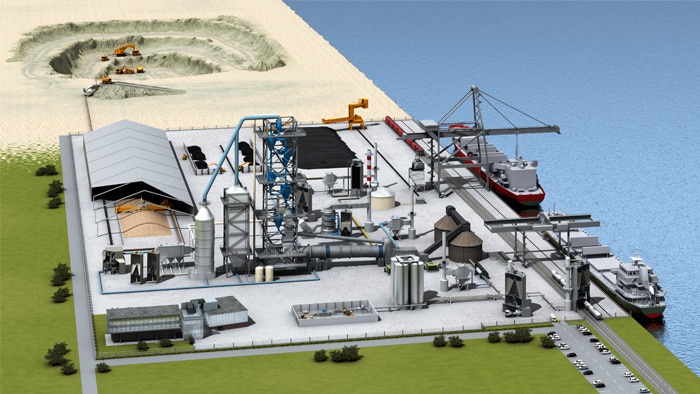Sensors from SICK measure the volume flow of raw material on the conveyor belt from the bunker onto the main conveyor belt to the combustion process and thus ensure the metered supply of secondary material.
Feeding bulk materials on a running belt: Dosage and mix must be right
The conveyor system in the cement plant is impressively large. If all band lengths were added up, the total distance would be several kilometers. Conveyor belts are usually in operation around the clock, bringing material to the right place in a controlled and efficient manner. A large number of monitoring tasks are carried out along these routes. The long transport route does not automatically have to be accompanied by a higher metrological challenge. It is often the smaller conveyor belts that create special tasks for the measurement technology. The cement plant belonging to HeidelbergCement AG in Lengfurt, Germany has found a powerful solution for short routes with the Bulkscan® LMS511 from SICK and is precisely regulating the feed of secondary raw material on the raw meal belt.
From the bunker to the transfer point to the main transport belt, measurement of bulk materials with rugged measurement technology is required. It is very dusty in the hall in which the conveyor belt transports additional ferrous material on a length of only a few meters. The conveyor was originally used for different purposes and now, after a plant conversion, it dispenses additives. To comply with the defined clinker mineralogy, the output values of the installed measurement technology must be absolutely reliable so that the cement properties are correct in the end. For a conventional belt scale, it is nearly impossible to identify the mass flow of the material. The belt is only 60 cm wide and the belt loading system is only a few centimeters high. In addition, installing a belt scale is time-consuming and cost-intensive and involves large mechanical modifications. The Bulkscan® LMS511 is mounted above the conveyor belt. The system must not be at a standstill during installation and, in contrast to belt scales, the conveyor belt does not need to be separated.
Quick view
The Bulkscan® LMS511 measures from above. Because everyone knows you have the best view from there. The non-contact, laser-based volume measurement system above the conveyor belt thus provides an exact overview of the transported quantity. With the proven 5-echo pulse technology, the laser volume flow meter generates a reliable flow signal using the laser’s time of flight and the belt speed information. The technology filters out interfering echoes caused by dust, fog, glass or precipitation, thereby delivering reliable measurement results. In addition to the volume flow, the sensor also delivers the mass flow in combination with the material density. It is completely irrelevant how fast the belt is running or which bulk materials are being transported. Furthermore, the Bulkscan® LMS511 contributes to optimal operation of the conveyor belt due to its integrated detection function for center of gravity, material height and belt drift and the associated reduction in downtime. Even falling bulk material cannot harm the sensor due to its position over the conveyor belt. The sensor perfectly underlines the smooth application solution from SICK.
The Bulkscan® LMS511 has exceeded the customer’s expectations: The exact measured values of the laser scanner transmitted to the control room ensure precise control of the dosage in the interface. The smooth, optimal production process saves a huge amount of work, time and money. And the maintenance effort of less than an hour a year is also a plus
Read more:
Gas and dust measurement: limiting explosions
Visionary-B 3D assistance system prevents accidents when driving backwards
System shutdown in mines is now a thing of the past
Bulkscan® LMS511 from SICK: Steel scrap adds color to cities
Bulkscan LMS511 optimizes brown coal extraction at RWE Power in Inden




